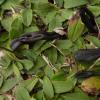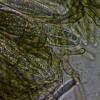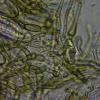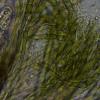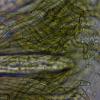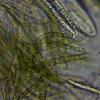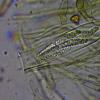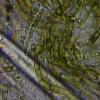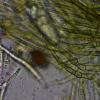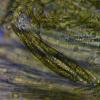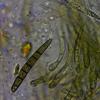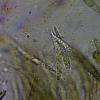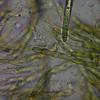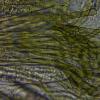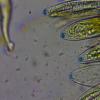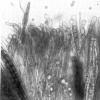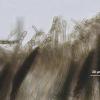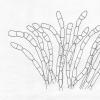
15-12-2025 07:09
 Danny Newman
Danny Newman
indet. Rutstroemiaceae sp. on unk. fallen leavesMc

18-12-2025 21:17
Pol DebaenstThe identification took me to Byssonectria deformi

19-12-2025 10:10
Patrice TANCHAUDBonjour, récolte réalisée en milieu dunaire, a

18-12-2025 17:23
 Bruno Coué
Bruno Coué
Bonjour,je serais heureux d'avoir votre avis sur c

18-12-2025 18:07
Margot en Geert VullingsThese plumes were found on rotten wood.They strong

17-12-2025 18:35
 Michel Hairaud
Michel Hairaud
Bonjour à tous/Hi to everyone I am passing along

15-12-2025 15:48
 Danny Newman
Danny Newman
Melanospora cf. lagenaria on old, rotting, fallen

15-12-2025 15:54
 Johan Boonefaes
Johan Boonefaes
Unknown anamorph found on the ground in coastal sa

15-12-2025 21:11
 Hardware Tony
Hardware Tony
Small clavate hairs, negative croziers and IKI bb

... found 12.11.2019, Burg Vogelsang, Eingang, an Straßenböschung zwischen Hieracium pilosella (s.l.). The paraphyses are quite straight, with a lot of septa (short distances) and with some "double cells" as I would consider. The spores (a lot are not yet ripe) are 7-septate, and about 50-75/6-7 µm (but I measured only few). Macroscopically it resembles G. cookeanum that I also found in this week. With the Spanish key I end at G. inflatum, with a lot of doubt. Who can provide me with a proposal?
Best regards, Lothar
Gruß, Till

ja, von Arauzo & Iglesias.
LG Lothar

Hello Malcolm,
thank you very much for your response!
Yes, I was at G. simile, too (with the key of Benkert, and before I tried the Spanish key), but the double cells are only few, and not as abundant as one can see in other figures of G. simile. I know the earth tongues are very variable concerning their paraphyses (for instance G. cookeanum as described already by Benkert). My problem: I already found a lot of earth tongues, but not by now (typical) G. simile.
So I am very happy about your opinion - and yes, perhaps I will consider the specimen G. simile. The differences do not seem very large. But: maybe there are still other opinions?
Best regards, Lothar

According Hakelier (1967) G. simile, G. uliginosum and G. cookeanum are very similar. As far as I know no sequencing defined the real relationship between these species. These three species have constricted septa and few to many doubble cells in the paraphyses.
G. simile should be excluded as it is linked with fens and wet grassland and has according all literature I know longer spores.
G. uliginosum has a habitat similar to G. simile, has spores with a length somewhat between G. simile and G. cookeanum and typically many paraphyses with an obpyriform end cell. I would exclure G. uliginosum here.
G. cookeanum occurs in mentioned habitat, has the shortest spores, and meets based on macroscopy and microscopy (few double cells) best your collection.
Bernard

Hello Bernard,
thank you for your opinion!
To call this G. cookeanum is quite difficult for me. I collected this species often, and very variable, but not in this way. And: according to Benkert G. cookeanum does not have double cells.
Further: I do not believe in a too strict ecolocigal differentiation of (most) species of (black) earth tongues. I have collected (more or less typical) G. cookeanum in dry and wetter areas, in woods, bushes and in grassland, and mostly (but not only) ond calcareous soil (the soil in this specimens is acid). And so I did for instance with Trichoglossum hirsutum (from dry calcareous bushes to acid wet bogs), G. umbratile (dry meadows and bogs) and other species. T. walteri is common in some regions in rather dry acid lawns, but also grows in really wet situations. To argue with ecology is maybe a bit premature, as I believe.
But anyway - likely you are right and I label the specimen G. cookeanum atyp. cf.
Best regards and thanks again,
Lothar

My opinion is based on a study in depth of Geoglossum made by a friend of mine who studied the type species where available (paper in preparation).
I am sorry, Dieter Benkert is a good firend of mine but he was wrong as far as he stipulated that G. cookeanum has no double cells. I never studied German collections, but I confirm that the 80 Belgian collections studied have, among all kind of other forms, few double cells (see photo in annex). Nannfeldt (1942) in his original description does not mention double cells, but the description certainly does not exclude such possibility.
But the forum is made for sharing opinions and experiences which may be different. No problem if we do not agree upon.
Bernard

Hello Bernard,
I never observed double cells in cookeanum, too.
And: yes, why should there be a problem about different opinions?
And: I wrote you likely are right about a very unusual form of G. cookeanum.
Best regards and thanks again, Lothar
I’ve seen 8 specimens of Geoglossum simile, only from very wet conditions, in fens (3 places in Flanders).
The aspect of the paraphyses is very slender, filiform. The double cells are every where.
On the stipe you can find the same paraphyse-like cells.
I never found Geoglossum cookeanum in very wet conditions.
In the 80 collections I’ve seen in Flanders I haven’t found typical double cells (as far as I remember).
An Geoglossum cookeanum with malformed paraphyses?
What is the microscopy of the other specimens?
Best regards
Luc Lenaerts

Hello Luc,
I agree with (or accept) G. cookeanum with very atypical paraphyses for my specimen. Thanks for your opinion, too. I do not think my collection is G. simile. I never found this species, unfortunately.
In the same week (as the collection above) I found G. cookeanum very typical - with "moliniform" paraphyses.
I found G. cookeanum often through the years, also the forms of Benkert (duckhead-form etc.).
Best regards, Lothar

Hello Sabino,
thank you very much! It is sometimes hard to believe how variable the species is.
And thanks to all who contributed to the determination of (atypical) Geoglossum cookeanum.
Best regards, Lothar

